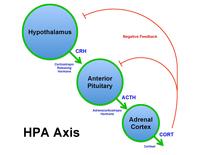
Photo from wikipedia
Studies have shown that combat-area deployment is associated with increases in alcohol use; however, studying the influence of deployment on alcohol use faces 2 complications. First, the military considers a… Click to show full abstract
Studies have shown that combat-area deployment is associated with increases in alcohol use; however, studying the influence of deployment on alcohol use faces 2 complications. First, the military considers a confluence of factors before determining whether to deploy a service member, creating a nonignorable exposure and unbalanced comparison groups that inevitably complicate inference about the role of deployment itself. Second, regression analysis assumes that a single effect estimate can approximate the population's change in postdeployment alcohol use, which ignores previous studies that have documented that respondents tend to exhibit heterogeneous postdeployment drinking behaviors. Therefore, we used propensity score matching to balance baseline covariates for the 2 comparison groups (deployed and nondeployed), followed by a variable-oriented difference-in-differences approach to account for the confounding and a person-oriented approach using a latent growth mixture model to account for the heterogeneous response to deployment in this prospective cohort study of the US Army National Guard (2009-2014). We observed a nonsignificant increase in estimated monthly drinks in the first year after deployment that regressed to predeployment drinking levels 2 years after deployment. We found a 4-class model that fit these data best, suggesting that common regression analyses likely conceal substantial interindividual heterogeneity in postdeployment alcohol-use behaviors.
Journal Title: American Journal of Epidemiology
Year Published: 2017
Link to full text (if available)
Share on Social Media: Sign Up to like & get
recommendations!